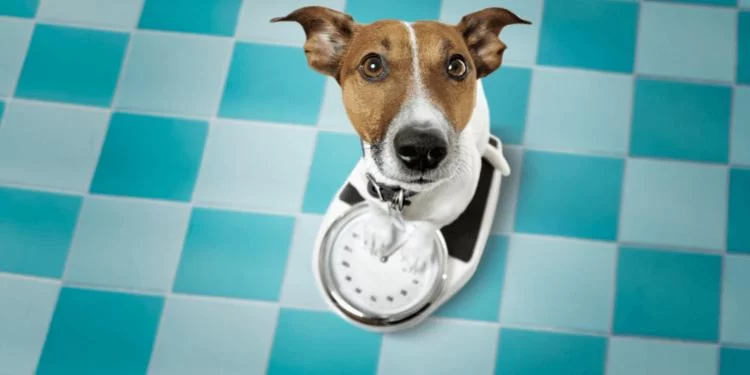How to Help Your Pet Lose Weight Safely
As a pet owner, one of the most rewarding and challenging responsibilities is ensuring our pets are happy and healthy. Unfortunately, many of us struggle with our furry friends gaining excess weight over time. If you're noticing that your pet has packed on a few extra pounds, you're not alone. This issue is more common than you might think, and it’s something that needs to be addressed for your pet’s long-term health and well-being. Let me share some practical and vet-approved ways to help your pet lose weight safely.
Understanding Pet Obesity and Its Risks
First, it’s essential to understand why weight loss is necessary. Just like in humans, obesity in pets can lead to various health issues, including diabetes, joint problems, heart disease, and a shortened lifespan. Overfeeding, lack of exercise, and even genetics can contribute to weight gain. Recognizing these risks early is key to taking proactive steps toward a healthier life for your pet.
1. Consult with Your Veterinarian
The first thing you should do if you're concerned about your pet’s weight is consult with your veterinarian. A professional evaluation is crucial to rule out any underlying medical conditions that could be causing the weight gain. Sometimes, thyroid issues or other health problems can lead to unexpected weight gain, so it's important to get a thorough checkup. Your vet will also provide guidance on safe weight loss goals for your specific pet, as each animal has unique needs.
2. Measuring and Adjusting Portion Sizes
One of the most common reasons pets gain weight is because they're eating too much food. You might think you're giving them the right amount, but without proper measurements, it's easy to overfeed. Start by checking the recommended portion sizes on your pet’s food packaging. But remember, these are general guidelines, and your pet's needs might be different depending on age, activity level, and metabolism. Use a kitchen scale or measuring cups to ensure you’re feeding them the right amounts. If you're unsure, ask your vet for advice on portion control.
3. Switch to a Healthier Diet
If your pet has been eating high-calorie food, it might be time for a change. Your veterinarian might recommend a lower-calorie diet or one that’s specially formulated for weight loss. Look for food with high protein and fiber content, which will keep your pet feeling full without adding excess calories. Consider consulting your vet about switching to a prescription weight loss food or adding healthy, low-calorie treats like carrots or green beans into their diet.
4. Encourage Regular Exercise
Exercise plays a huge role in weight management. However, many pets—especially cats—don’t get as much physical activity as they need. It’s time to change that! Regular walks for dogs or interactive play sessions for cats can help your pet burn calories and maintain a healthy weight. Try setting aside time each day for a walk or some playtime with toys. This is not just beneficial for your pet’s weight; it also strengthens your bond with them.
5. Keep an Eye on Treats and Snacks
Treats are an essential part of the pet-owner relationship, but they can quickly add up in calories. If your pet is overweight, it’s important to cut back on treats. When offering a snack, make sure it's low-calorie and suitable for their weight loss plan. Some pet owners make the mistake of giving too many treats, thinking they're being kind, but this can significantly slow down the weight loss process. Try to limit treats to no more than 10% of your pet’s total daily calorie intake.
6. Stay Consistent and Patient
Weight loss takes time, and it’s essential to remain patient and consistent. Just like in humans, gradual changes are the healthiest for your pet. Don’t expect overnight results, but stick to the plan, and you’ll likely see progress in a few weeks. Regular weigh-ins are a great way to track progress. Weigh your pet every month, and if you notice significant changes, revisit the vet for further advice.
7. A Personal Success Story: Mia’s Journey
Let me tell you about Mia, my 7-year-old Labrador who had been gaining weight steadily over the last few years. At first, I didn't think too much of it—she was still playful and energetic. But after a visit to the vet, I learned she had put on almost 10 pounds, which is a lot for a dog her size! My vet helped me understand the importance of adjusting her diet and incorporating more exercise into her routine. Over the next six months, Mia lost 8 pounds. Not only did her energy levels improve, but her joint pain also diminished, and she seemed much happier. Watching Mia’s transformation was one of the most rewarding experiences, and it showed me how important it is to take action before things get worse.
8. The Role of Mental Health in Weight Management
It’s easy to focus solely on diet and exercise when thinking about weight loss, but mental health also plays a role. Stress and anxiety can cause pets to overeat or eat out of boredom. Providing enrichment, like puzzle toys, and ensuring your pet’s environment is calm and stable, can help reduce stress. If you think your pet might be suffering from anxiety, consult with a behaviorist or your vet for advice on how to handle the situation.
9. Consider Professional Help
If you’ve tried everything and your pet is still struggling to lose weight, it might be worth seeking the help of a professional, such as a veterinary nutritionist or a pet fitness trainer. These experts can create customized plans that are tailored to your pet's specific needs, which can make all the difference in reaching your pet’s ideal weight.
Remember, losing weight is not just about looking good—it’s about improving your pet’s quality of life and ensuring they live a long, healthy, and happy life. By following these tips and staying dedicated, you can help your pet shed those extra pounds and thrive!












